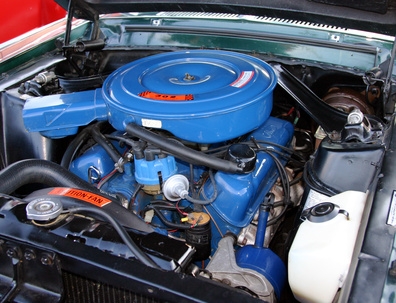
An engine's firing order is the sequence in which the spark plugs fire the cylinders, running in synchronization with the distributor. Cylinders must fire in the proper order to run smoothly and provide power. The firing order in a Ford engine normally begins with the forward passenger-side piston, firing in order to the rear of the engine and repeating on the driver's side. Since front-wheel-drive engines are inverted, the order begins at the front piston on the driver's side. Each family of engines follow a similar pattern but exceptions exist, so consult a diagram of firing orders and distributor rotation to properly identify Ford firing orders.
Remove the number one cylinder spark plug with a socket wrench. On rear-wheel-drive engines, it is the forward-most spark plug on the passenger side. For front-wheel-drive engines, it is the forward-most spark plug on the driver's side, toward the front of the vehicle. This is true for all engines except the front-wheel-drive 183- and 232-cubic-inch, in which the number one cylinder of these V-6 engines is at the rear passenger side, according to MRE-Books.com.
Crank the engine until the number one cylinder is at top dead center, or TDC. To verify TDC, insert a small wood dowel into the spark plug hole and feel for the top of the piston when it is at its highest position. This process may take a few tries, but if you feel the top of the piston, you are likely at TDC.
Take off the distributor cap. When the engine is at TDC, the distributor rotor will be facing the number one spark plug position. Since Ford distributors rotate counterclockwise, the next position to the left should be the number two cylinder, following in sequence.
Consult a firing order diagram. Diagrams found on MRE-books.com, AA1car.com, the Ranger Station and Boxwrench.net illustrate firing orders for different Ford engines. Consult these diagrams to identify differences in the normal Ford firing order.